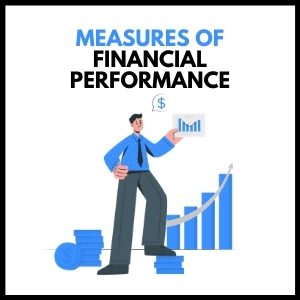There are a number of financial metrics used frequently to measure performance of a company. To name a few; EBITDA margin, EBIT or operating margin, Net income margin, earnings per share, return on equity, return on invested capital or Return on capital etc.
While going through analyst reports, investor presentations, we find dissimilarity in performance measurement metrics used by analysts, companies, to analyses the performance or benchmark company’s performance vs peers.
The question is whether all these are measures good to analyses or benchmark the performance. How can one judge which metric is best or can these be used in all the situations.
Before answering this question, let’s understand what each metric mean.
EBITDA margin:- EBITDA is Earnings before interest tax depreciation and amortization. It may be referred to as operating margins before depreciation and amortization. It is calculated as;
This measure is often used to compare relative performance vs. peers.
Pros :
- EBITDA margin is easy to calculate.
- It measures cash margins generated from business operations.
- Good measure to compare margins across peers.
Cons :
- EBITDA margin does not take into account how efficiently a company has utilized its assets/ capital.
- Does not take into account the economic charge for assets utilized (depreciation/amortization).
EBIT margin :- EBIT is Earning before interest and tax. It is also generally referred to as operating margin, as it measures profits generated from day to day operations of a company.
It is calculated as;
Pros :
- EBIT margin is easy to calculate.
- It measures profits generated from business operations after taking into account the economic charge (depreciation and amortization) for assets utilized in the business. Economic charge is important as companies usually have to replace their property, plant and equipment after their economic life is over.
- Good measure to compare profits/margins generated by different companies.
Cons :
- Does not take into account how efficiently a company has utilized its assets/ capital.
Net income margin :- Net income or Net profit is profit attributable to equity shareholders of a company. It is also referred to as bottom line since it is at the bottom of the income statement. It is calculated after accounting for all operating and non-operating income/costs.
Pros:
- Measures profits attributable to equity shareholders per dollar of revenues.
- Easy to calculate and understand.
Cons:
- Impacted by capital structure of a company – Two companies generating same operating profits but with different capital structure (debt and equity) may have different net income margin. Hence, this metric may be impacted by difference in capital structure; thus not giving a true picture of operations of a company
- Can be manipulated by accounting adjustments – Net income may also be impacted by non recurring income (eg. investment income) or expense (impairment of assets). Therefore, one should exclude such accounting anomalies before arriving at any conclusion.
- Also, Net income does not highlight how efficiently a company has utilized its assets.
Earnings per share (EPS) growth :- It measures how the profits per share of the company have grown from one year to another.
EPS is calculated as;
EPS is usually used to calculate Price/Earnings multiple of a company.
Other Pros and cons are similar to that of net income/ net income margin.
Return on Equity (ROE)
Return on Equity measures returns generated on equity capital invested in a company.
It is calculated as;
Pros
- Easy to calculate and understand.
- Good metric to measure returns of banks, financial institutions, insurance players.
- Can be linked to performance (margins) and capital efficiency. Return on equity can be broken as follows;
Cons
- It is a good measure for returns generated by banks and financial institutions, however not so good for measuring performance of industrial companies (retailers, CPG, Pharma, IT, Energy Cos etc.) as it is impacted by capital structure (debt and equity) and accounting adjustments.
ROIC – Return on invested capital
Return on invested capital is returns generated by company from its operations on total operating capital invested in it. Capital in this case includes both debt and equity. Also, this measure takes into account profits generated from the business operations of a company.
Hence, this metric is not impacted by accounting adjustments or capital structure of a company.
It is calculated as;
Pros:
- This metric takes into account returns from operations on total capital invested in the business. Return on invested capital for two companies generating same profits but having different capital structure will be same, as it is not impacted by capital structure.
- Returns can be linked to business performance (margin and capital turnover). Hence, it is easy to compare vs peers and identify performance gaps.
ROIC can broken as follows;
Working capital can further be broken into trade receivable, trade payable, inventory etc.
Cons:
- Calculating ROIC is a bit complex and time consuming.
While each metric has its pros and cons, it is imperative to understand what one is comparing. Looking at simple metric (like EBITDA) or going into calculations (ROIC) depends on how one wants to use his findings.
For understanding margins, EBITDA or EBIT margin would be enough, however if one wants to understand returns, margins and asset utilization for a company, one might have to look at ROE or ROIC depending on the industry he is looking at.
Let us understand all this with help of a simple example;
There are two companies, A and B operating in same sector. Company B is twice the size of Company A. Company A is financed fully by equity ($1000) and Company B is financed 50% by equity ($1000) and 50% by debt.
Here are the financial statements of these two companies for the year 20XX.
First let’s look at the margins for these two companies
We see that both EBIDA and EBIT margin for Company A and B is same. However, due to difference in financing structure (debt and equity) net income margin is different for these two companies. Thus, by looking at just net income margins we may come up with a wrong conclusion.
Now let’s see the return on equity and return on invested capital for these companies.
Return on equity for Company A is 15% while for Company B it is 27%. This ratio shows that Company B’s return on equity is higher compared to Company A.
Company B is financed by 50% equity and 50% debt. Since cost of debt is lower compared to cost of equity, ROE for company B is higher than that of A.
Is the message same when we look at Return on Invested Capital (ROIC)?
We see that, ROIC for the 2 companies remain the same. Interesting isn’t it?




33 thoughts on “Measures of Financial Performance: Key Indicators and Ratios”
[…] Monitoring and analyzing financial performance of existing investments to identify areas for improvement or […]
[…] shareholder return (TSR) is considered as a measure of a business’s financial performance, referring the complete amount that an investor makes from an investment—especially, equities or […]
[…] ratios are invaluable tools for evaluating a company’s financial performance and making informed investment decisions. By examining liquidity ratios, profitability ratios, […]
[…] section of the annual report, we find that the company is highly dependent on North America for its financial performance. Hence, investors need to read segment reporting along with other notes to better understand the […]
… [Trackback]
[…] Find More Information here on that Topic: skillfine.com/measures-of-financial-performancee/ […]
… [Trackback]
[…] Find More to that Topic: skillfine.com/measures-of-financial-performancee/ […]
… [Trackback]
[…] Read More Info here on that Topic: skillfine.com/measures-of-financial-performancee/ […]
… [Trackback]
[…] Find More to that Topic: skillfine.com/measures-of-financial-performancee/ […]
… [Trackback]
[…] Find More Information here to that Topic: skillfine.com/measures-of-financial-performancee/ […]
… [Trackback]
[…] Information on that Topic: skillfine.com/measures-of-financial-performancee/ […]
… [Trackback]
[…] Info on that Topic: skillfine.com/measures-of-financial-performancee/ […]
… [Trackback]
[…] Here you will find 61659 more Info to that Topic: skillfine.com/measures-of-financial-performancee/ […]
… [Trackback]
[…] Find More here to that Topic: skillfine.com/measures-of-financial-performancee/ […]
… [Trackback]
[…] Read More on to that Topic: skillfine.com/measures-of-financial-performancee/ […]
… [Trackback]
[…] Read More here on that Topic: skillfine.com/measures-of-financial-performancee/ […]
… [Trackback]
[…] Read More to that Topic: skillfine.com/measures-of-financial-performancee/ […]
… [Trackback]
[…] Find More Information here on that Topic: skillfine.com/measures-of-financial-performancee/ […]
… [Trackback]
[…] Read More to that Topic: skillfine.com/measures-of-financial-performancee/ […]
… [Trackback]
[…] Read More Info here on that Topic: skillfine.com/measures-of-financial-performancee/ […]
… [Trackback]
[…] Here you will find 40376 additional Info on that Topic: skillfine.com/measures-of-financial-performancee/ […]
… [Trackback]
[…] Read More Information here on that Topic: skillfine.com/measures-of-financial-performancee/ […]
… [Trackback]
[…] Information on that Topic: skillfine.com/measures-of-financial-performancee/ […]
Your point of view caught my eye and was very interesting. Thanks. I have a question for you.
Your point of view caught my eye and was very interesting. Thanks. I have a question for you.
Perfect work you have done, this site is really cool with fantastic info .
I as well think thence, perfectly composed post! .
I’d constantly want to be update on new posts on this internet site, saved to bookmarks! .
Thank you for your sharing. I am worried that I lack creative ideas. It is your article that makes me full of hope. Thank you. But, I have a question, can you help me?
Good post. I learn something new and challenging on blogs
I stumbleupon every day. It’s always useful to read content from other
authors and use something from other sites.
I am in fact pleased to read this webpage posts which
includes tons of valuable information, thanks for providing such information.
122268 397507Soon after I initially commented I clicked the -Notify me when new feedback are added- checkbox and now each time a remark is added I get four emails with the same comment. Is there any method you will be able to take away me from that service? Thanks! 201504
Your point of view caught my eye and was very interesting. Thanks. I have a question for you.
212701 282099Hey, you used to write superb, but the last few posts have been kinda boringK I miss your super writings. Past few posts are just a little out of track! come on! 113358